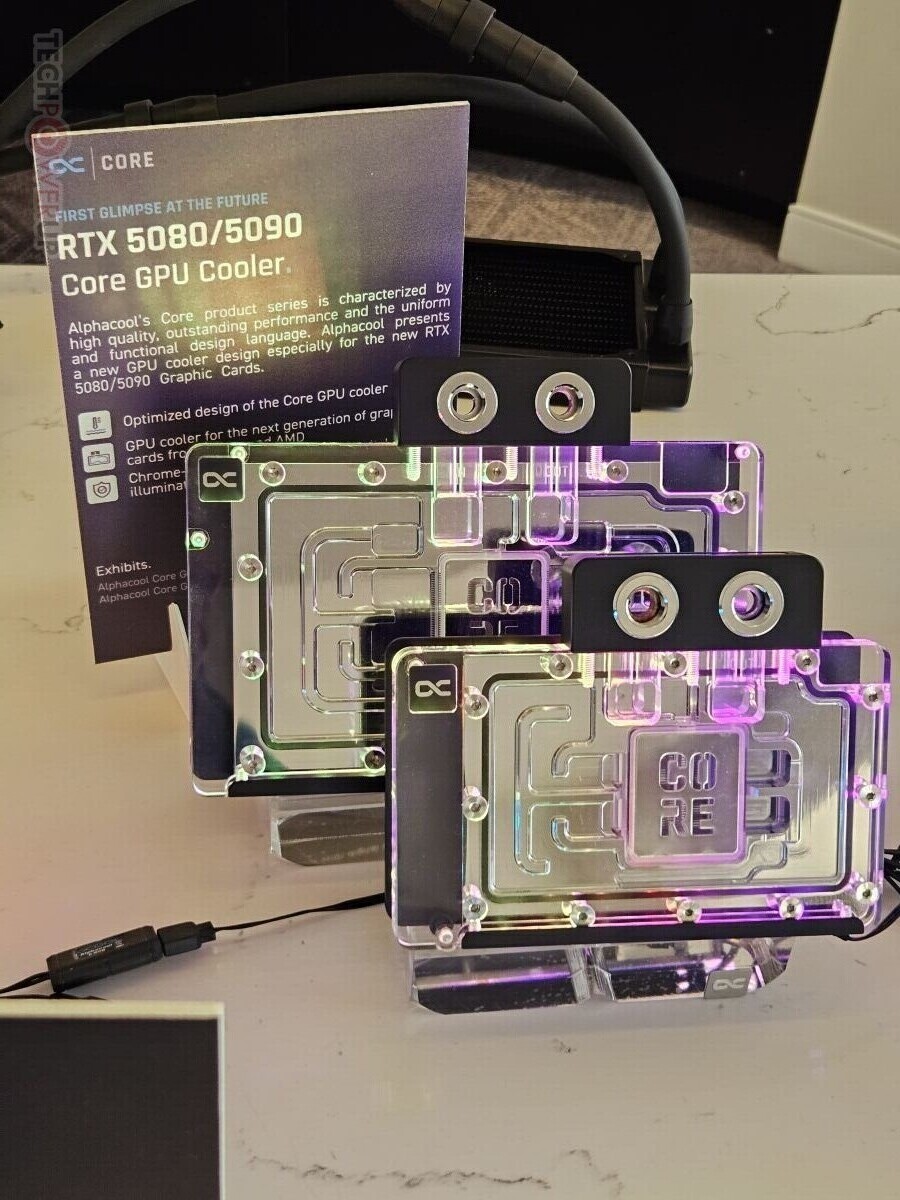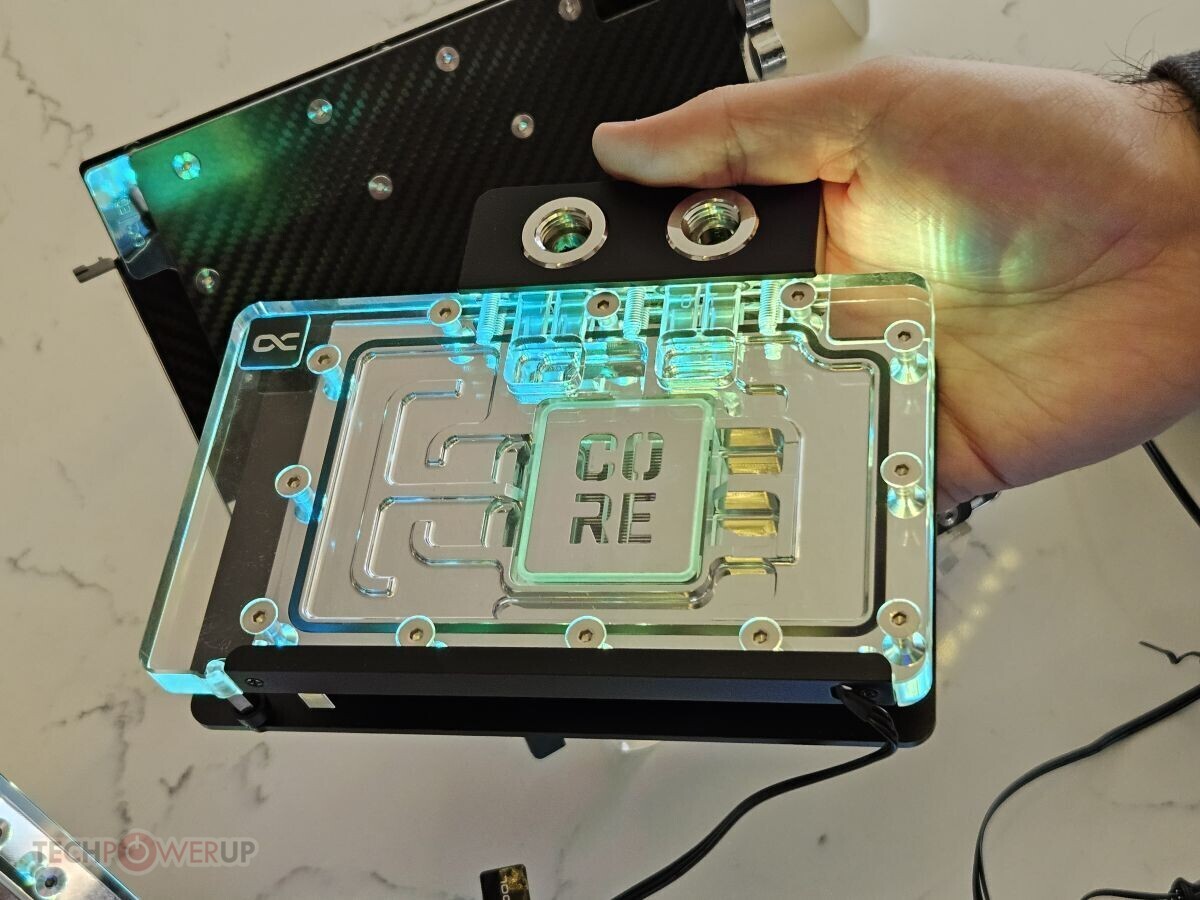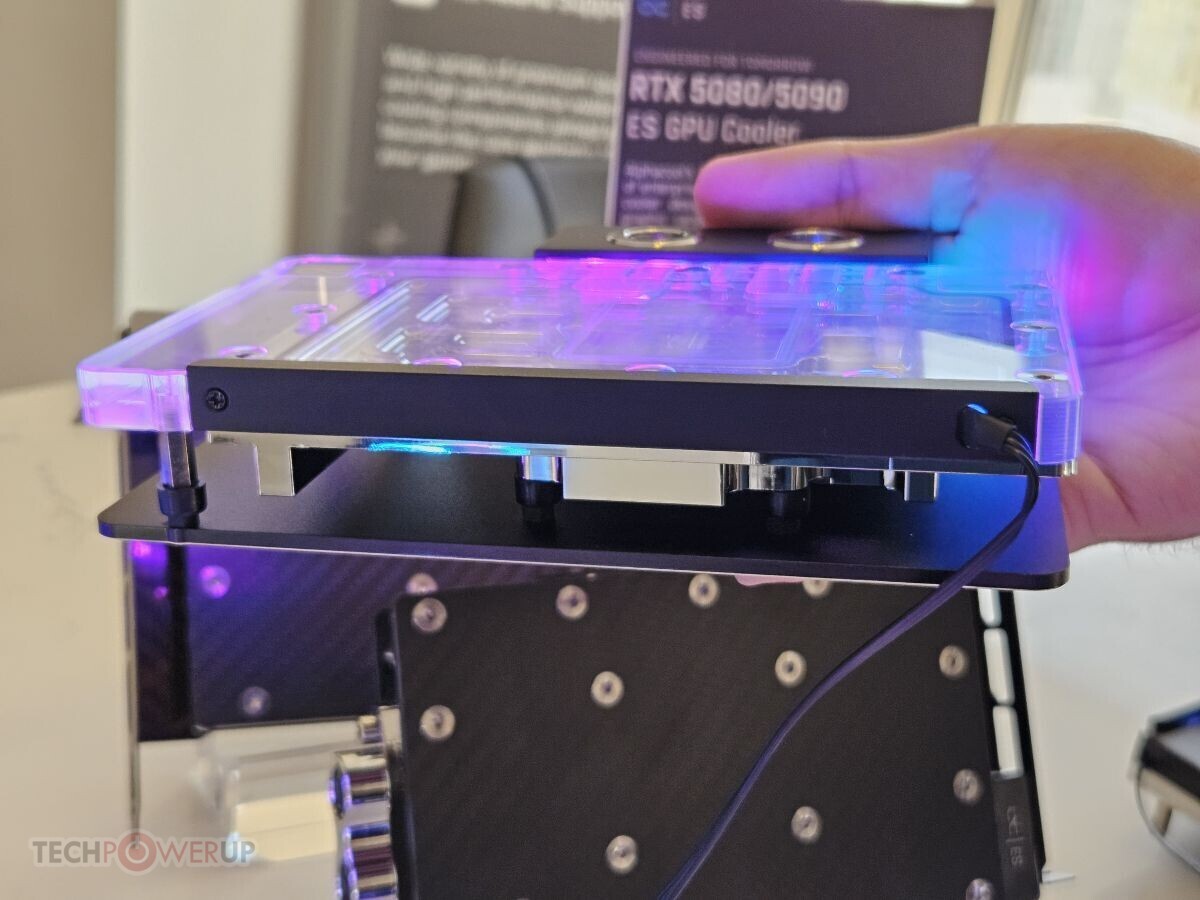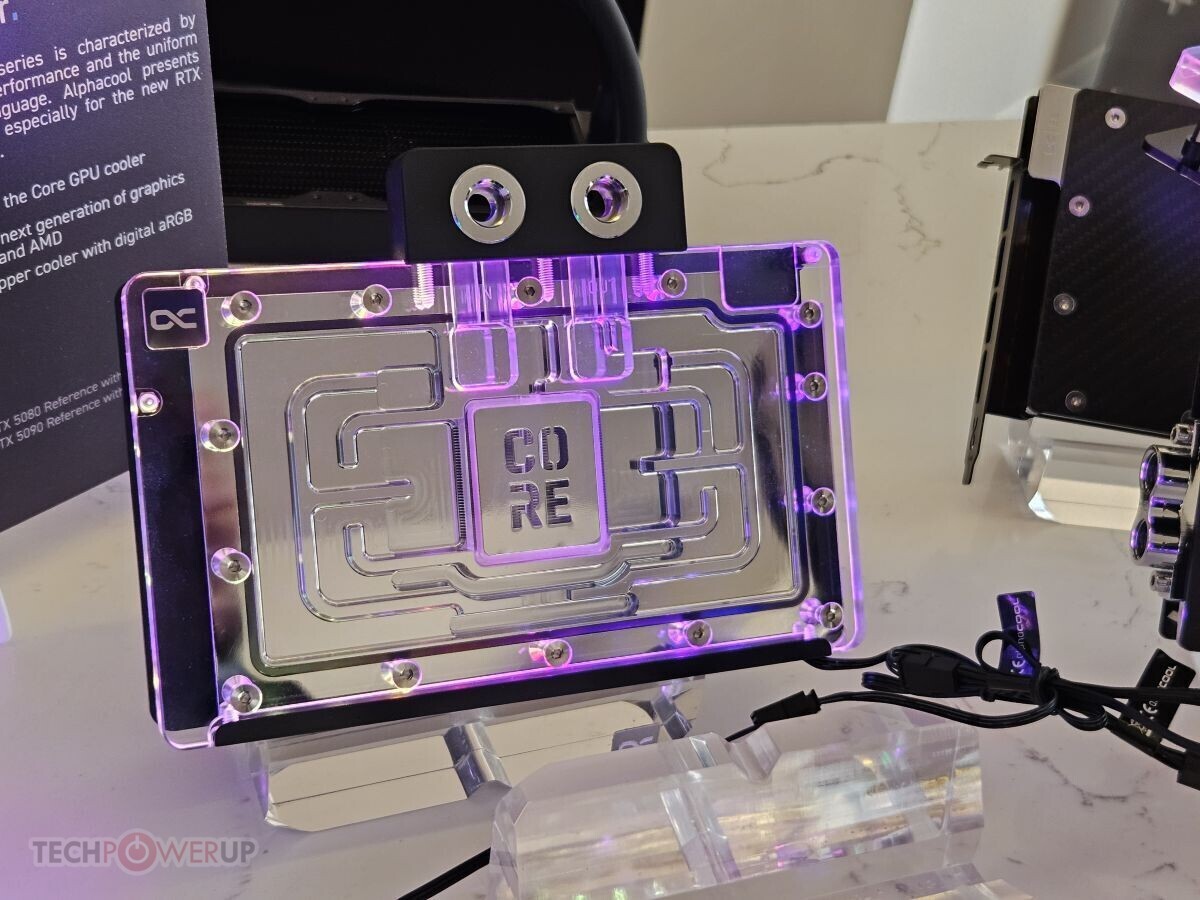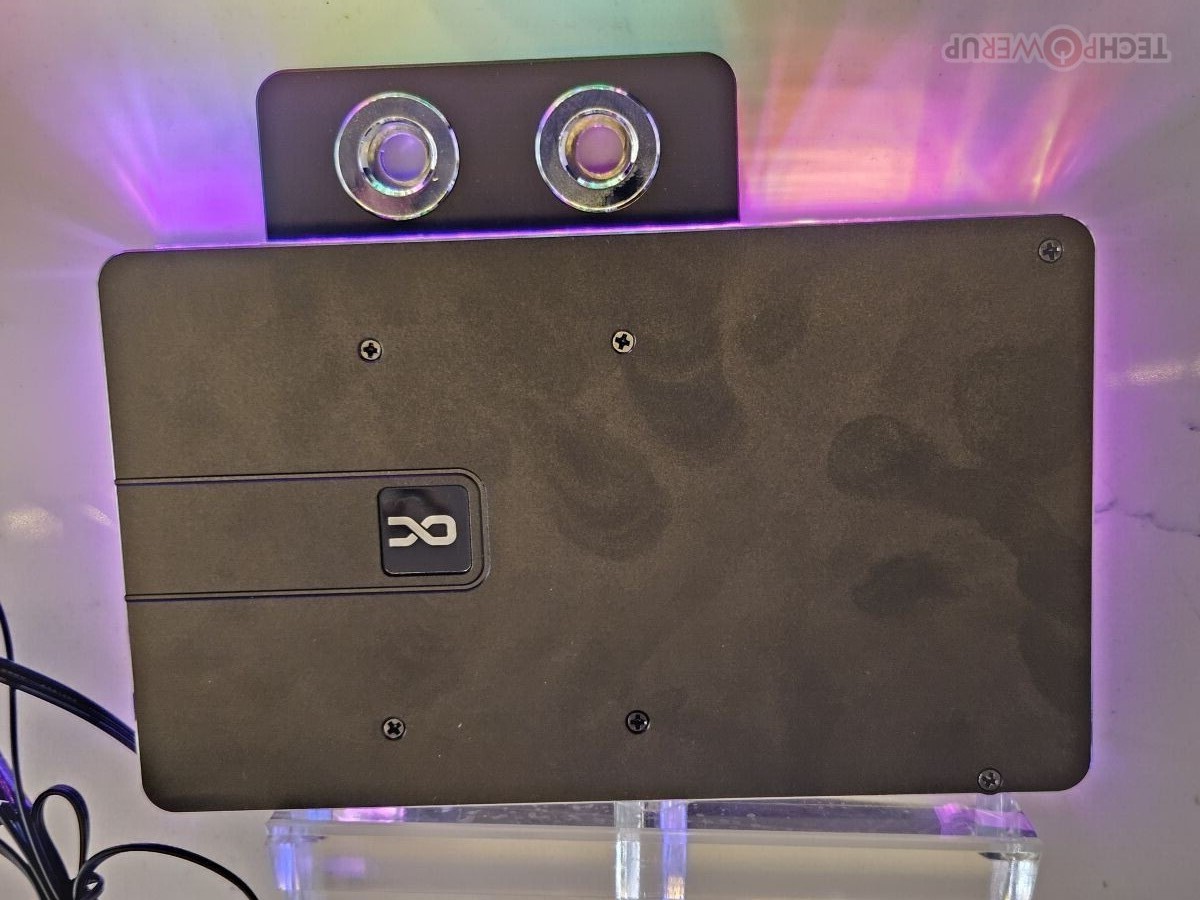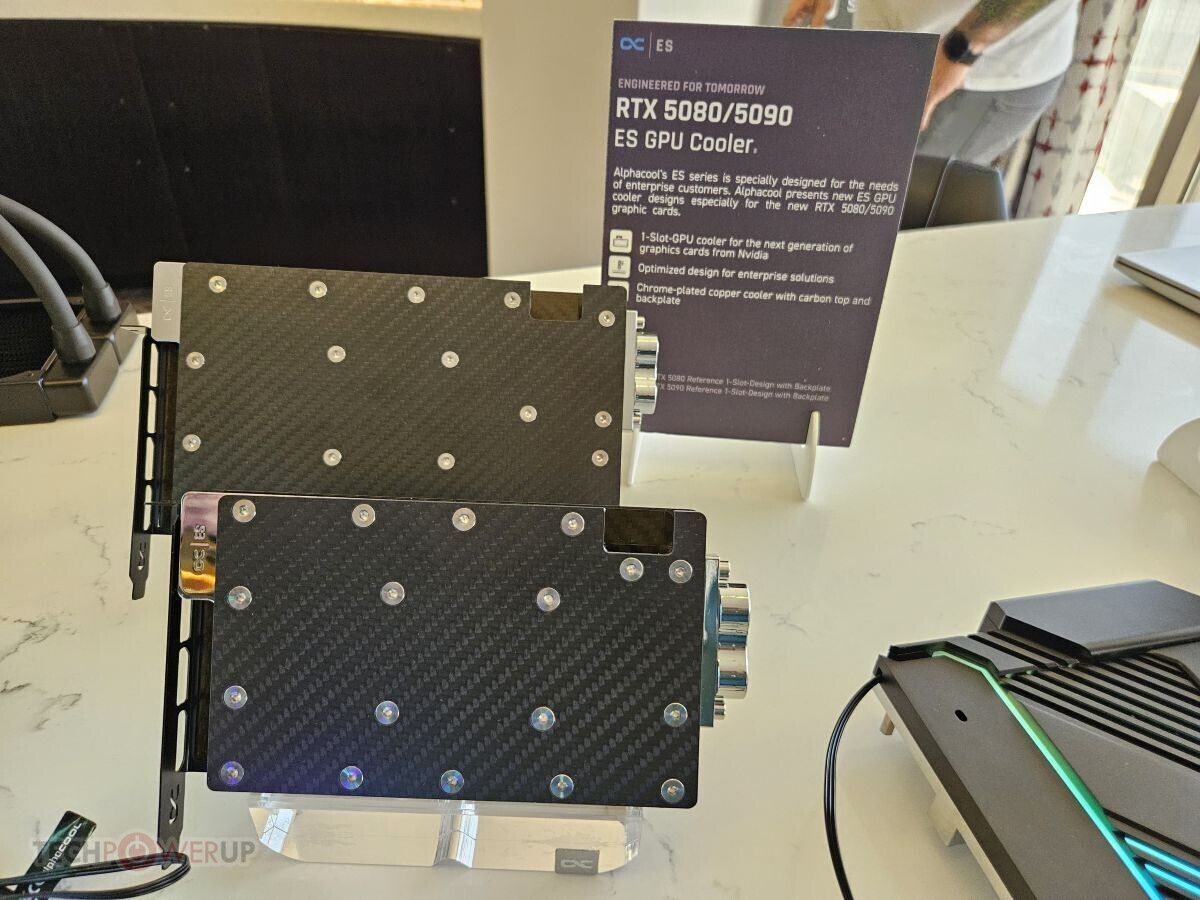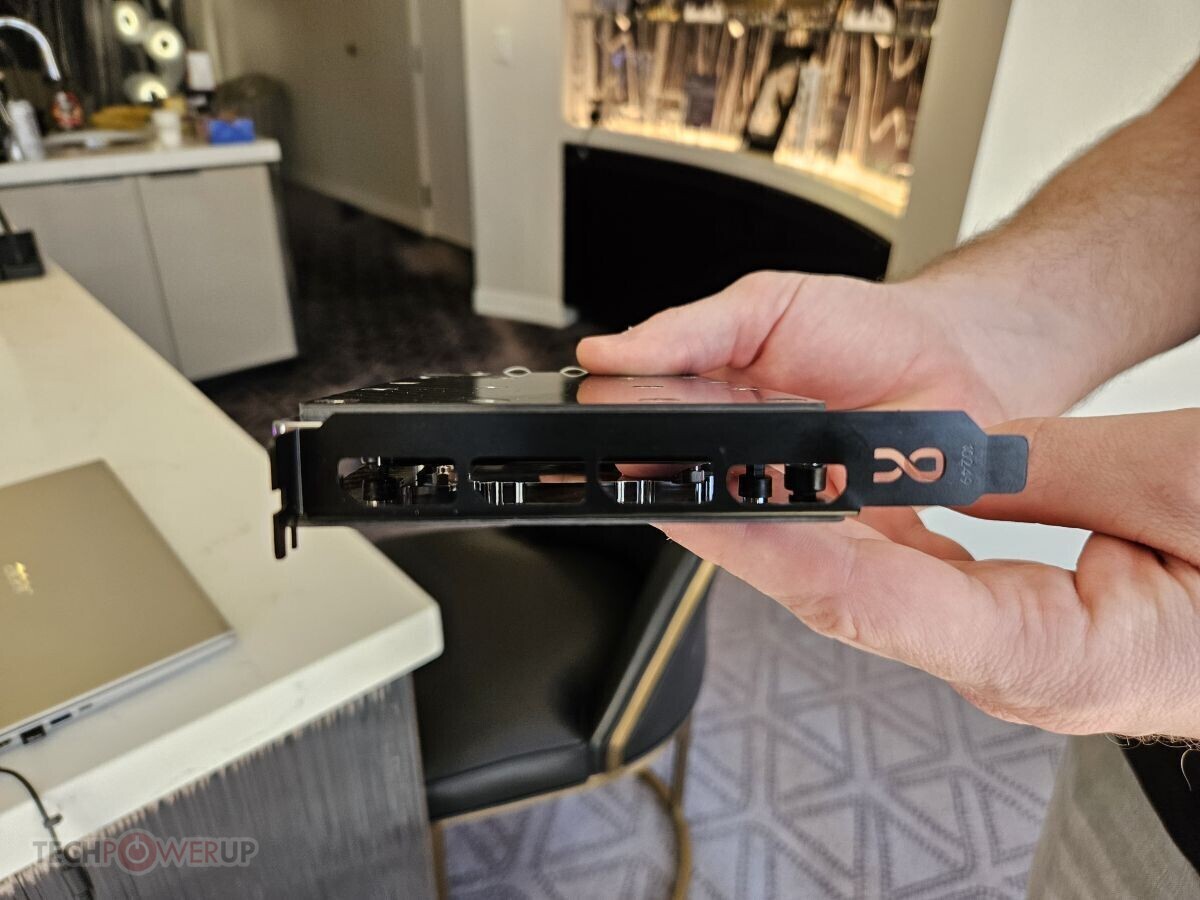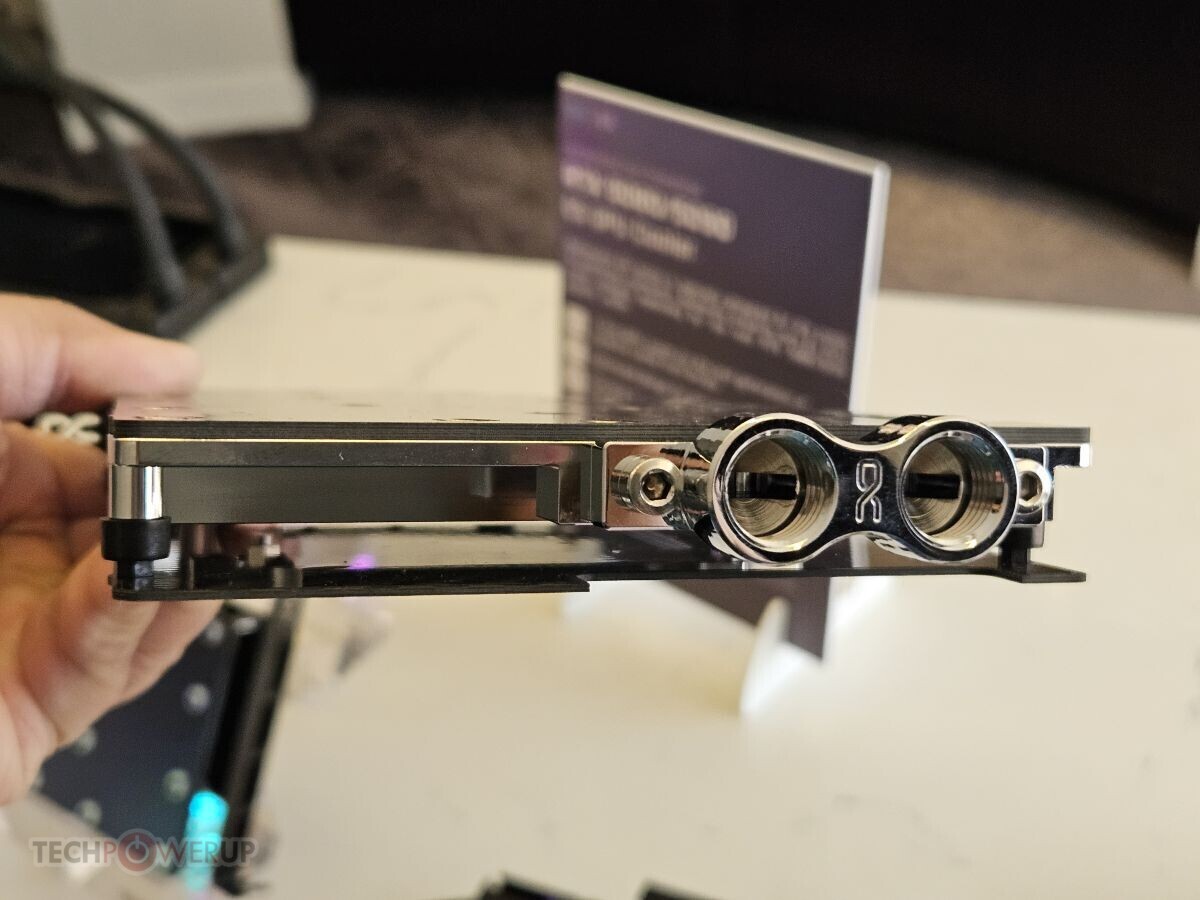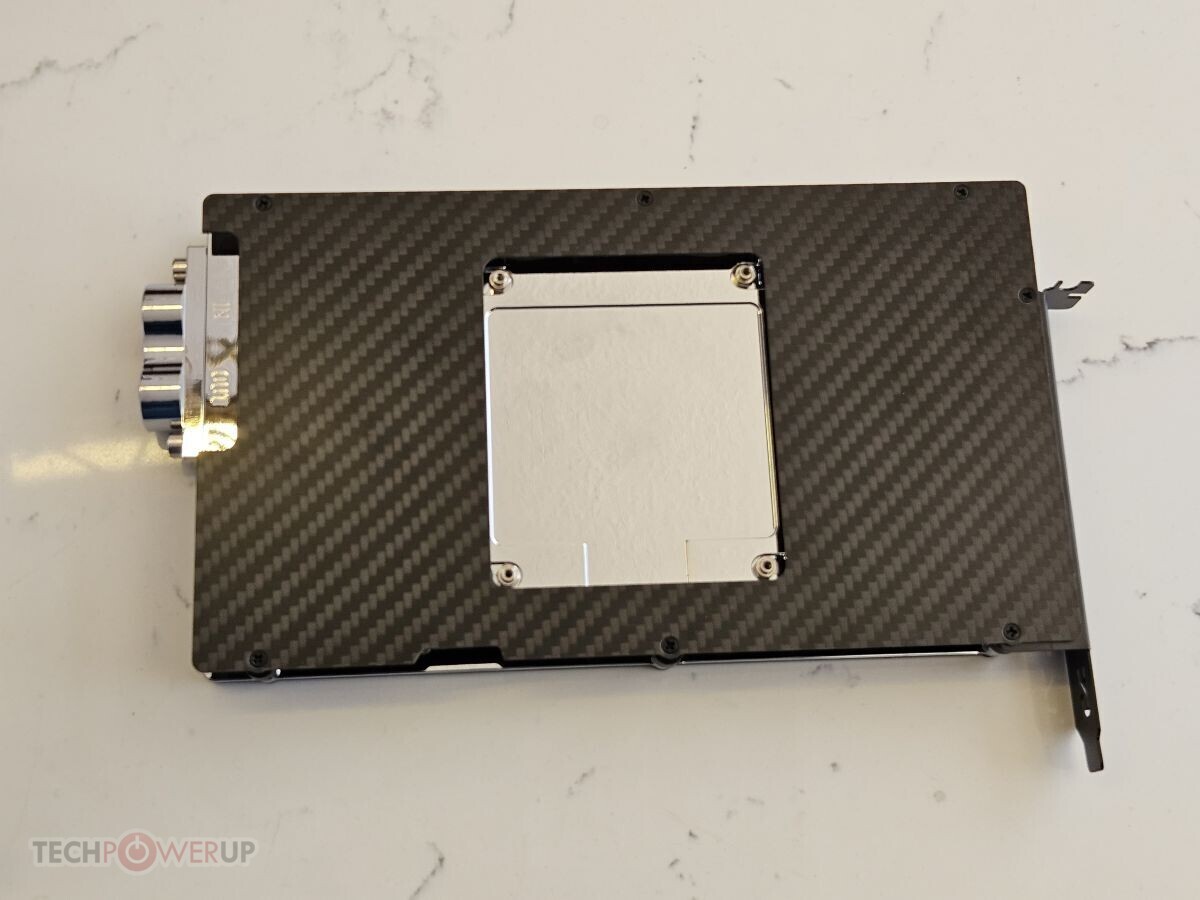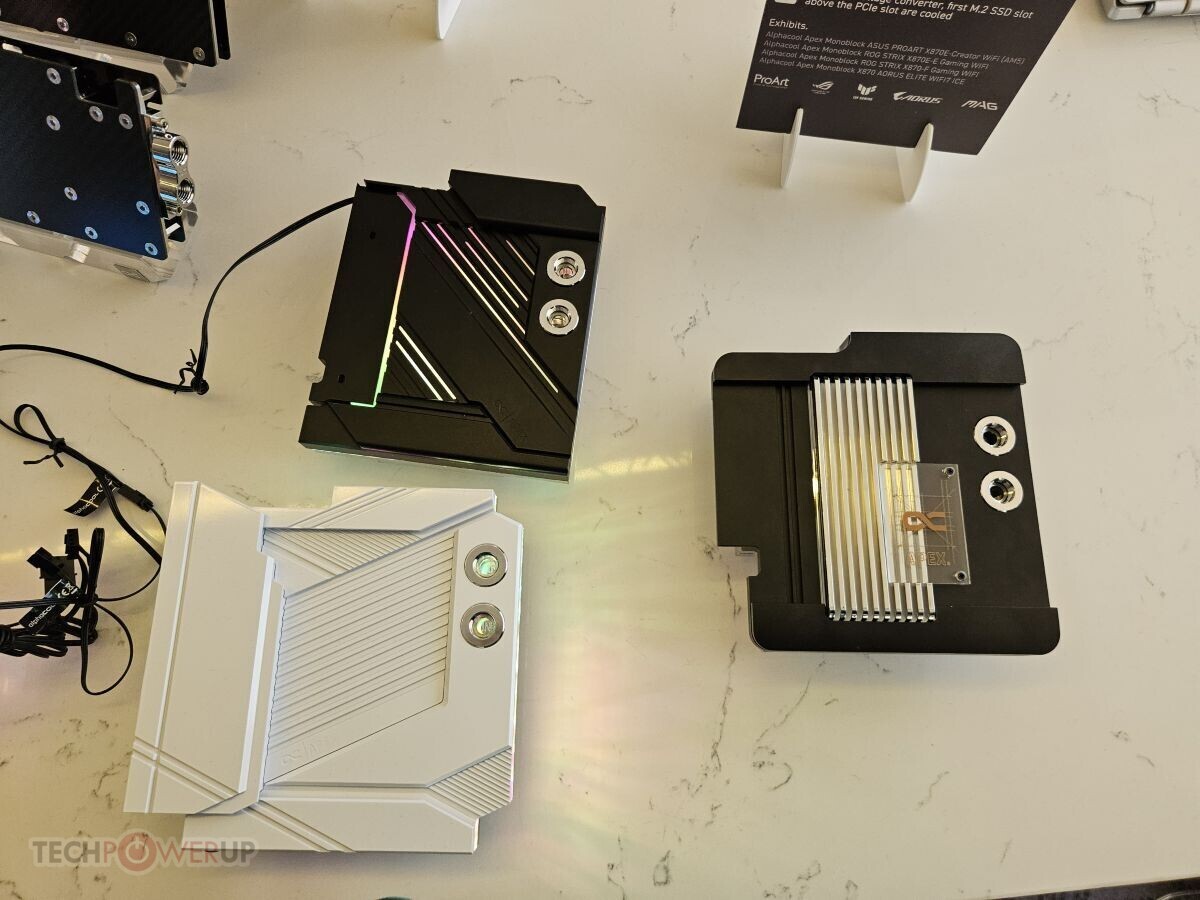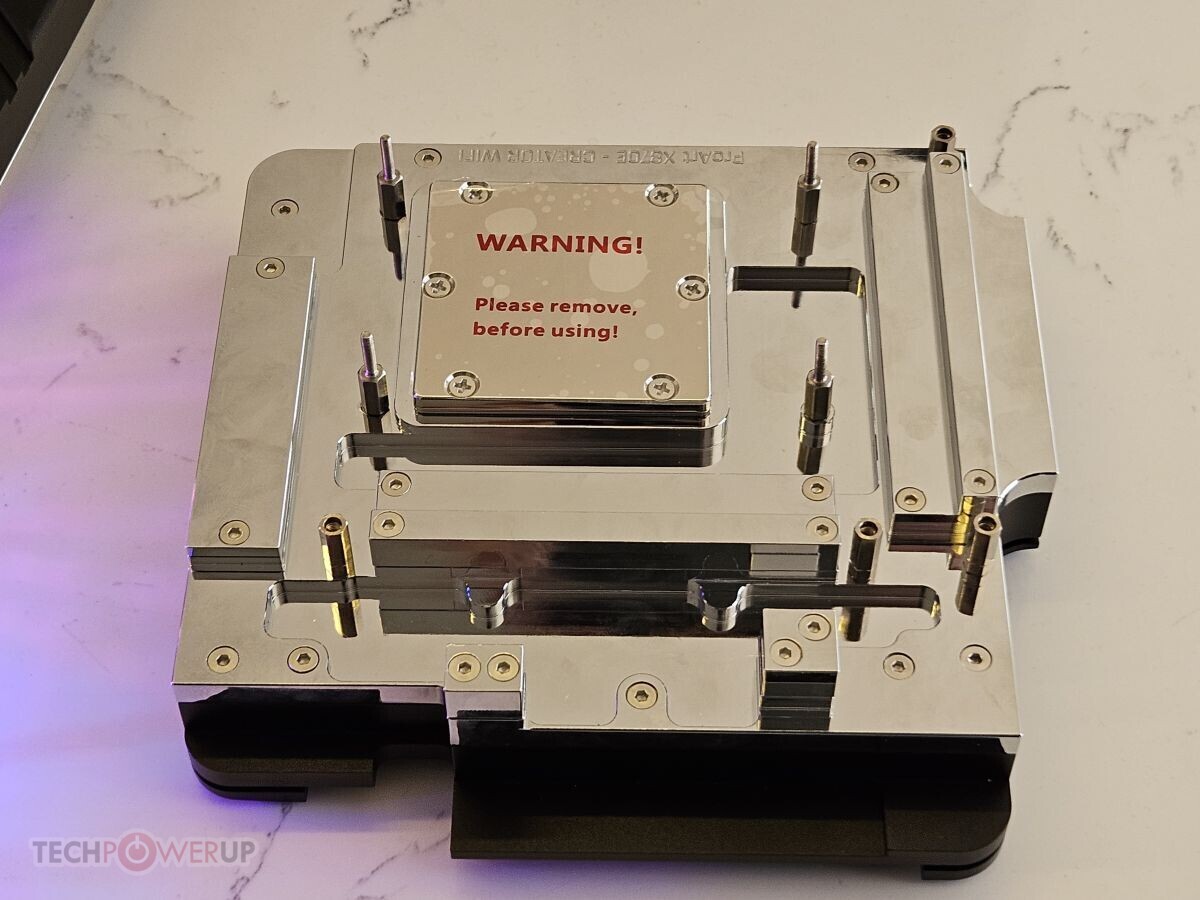Alphacool Unveils New Waterblocks for NVIDIA's GeForce RTX 5090 and 5080 Graphics Cards
Alphacool has revealed new waterblocks for NVIDIA's GeForce RTX 5090 and 5080 graphics cards at CES 2025. The company has updated its Core GPU waterblock series with revised component spacing and flow characteristics, developed through fluid dynamics simulations and practical testing. Unlike previous water blocks for RTX 40 series, the new designs feature chrome-plated copper cooling surfaces for enhanced durability and surface finish. The waterblocks also include brass fittings and a Core emblem above the jetplate. They are compatible with cards from major manufacturers such as ASUS, MSI, Palit, Gainward, and Inno3D, including models like ASUS ROG Strix and TUF Gaming, as well as MSI Suprim and Gaming variants. The RTX 5090 and 5080 Core waterblocks are priced at €199.98.
Additionally, Alphacool has introduced an ES (Enterprise Solutions) variant of the Core series. These 1-slot waterblocks are specifically designed for multi-GPU setups, featuring rear-oriented fittings to accommodate dense server and workstation configurations. The ES models are priced higher at €299.98. Each Core water block comes with a backplate, mounting hardware, thermal paste, and pre-cut thermal pads. The products will be available upon the launch of the graphics cards on January 30, with some models available for immediate purchase and others for pre-order.
Alphacool has also developed the Apex 1 monoblock, which offers integrated cooling for the CPU, voltage regulators, and PCIe slot above M.2 SSDs in a single cooling block. This design ensures direct contact with these components to minimize thermal resistance across the cooling path. Compatible with AM5 socket motherboards, including models like the ASUS ProArt X870E-Creator WiFi, ROG Strix X870E-E Gaming WiFi, ROG Strix X870-F Gaming WiFi, and GIGABYTE AORUS Elite WiFi 7 X870 ICE, each variant is specifically machined to match the component layout and mounting points of its target motherboard. The unified cooling approach eliminates the need for separate heatsinks while maintaining thermal control over multiple high-heat zones on modern motherboards.
